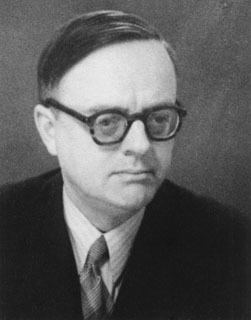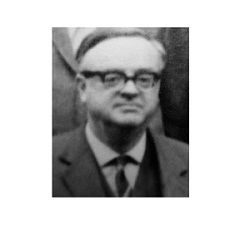Nationality Germany Role Physicist Name Pascual Jordan | Fields Physics | |
 | ||
Institutions Technical University Hanover Doctoral students Jurgen Ehlers, Engelbert Schucking Known for Quantum mechanics, quantum field theory, matrix mechanics, Jordan algebra, Nazi political affiliation Party Christian Democratic Union of Germany Books The Expanding Earth: Some Consequences of Dirac's Gravitation Hypothesis Parents Eva Fischer, Ernst Pasqual Jordan Similar People | ||
Education University of Gottingen | ||
Pascual Jordan | Wikipedia audio article
Ernst Pascual Jordan ( [ˈjɔɐ̯daːn]; 18 October 1902 – 31 July 1980) was a theoretical and mathematical physicist who made significant contributions to quantum mechanics and quantum field theory. He contributed much to the mathematical form of matrix mechanics, and developed canonical anticommutation relations for fermions. While the Jordan algebra is employed for and is still used in studying the mathematical and conceptual foundations of quantum theory, it has found other mathematical applications.
Contents
- Pascual Jordan Wikipedia audio article
- Expanding Moon Prof Pascual Jordans thoughts about our Moons expansion
- Family history
- Scientific work
- Political activities
- Selected works
- References

Expanding Moon? - Prof. Pascual Jordan's thoughts about our Moon's expansion
Family history

An ancestor of Pascual Jordan named Pascual Jorda was a Spanish nobleman and cavalry officer who served with the British during and after the Napoleonic Wars. Jorda eventually settled in Hanover, which in those days was a possession of the British royal family. The family name was eventually changed to Jordan (pronounced in the German manner, [ˈjɔʁdaːn] or [ˈjɔɐ̯daːn]). A family tradition held that the first-born son in each generation be named Pascual.
Jordan enrolled in the Hanover Technical University in 1921 where he studied an eclectic mix of zoology, mathematics, and physics. As was typical for a German university student of the time, he shifted his studies to another university before obtaining a degree. University of Göttingen, his destination in 1923, was then at the very zenith of its powers in mathematics and the physical sciences, such as under the guidance of mathematician David Hilbert and the physicist Arnold Sommerfeld. At Göttingen Jordan became an assistant to the mathematician Richard Courant for a time, and then he studied under the physicist Max Born for his doctorate.
Scientific work
Together with Max Born and Werner Heisenberg, Jordan was a coauthor of an important series of papers on quantum mechanics. He went on to pioneer early quantum field theory before largely switching his focus to cosmology before World War II.
Jordan devised a type of nonassociative algebras, now named Jordan algebras in his honor, in an attempt to create an algebra of observables for quantum mechanics and quantum field theory. Today, von Neumann algebras are also employed for this purpose. Jordan algebras have since been applied in projective geometry, number theory, complex analysis, optimization, and many other fields of pure and applied mathematics, and continue to be used in studying the mathematical and conceptual underpinnings of quantum theory.
In 1966, Jordan published his 182-page work Die Expansion der Erde. Folgerungen aus der Diracschen Gravitationshypothese (The expansion of the Earth. Conclusions from the Dirac gravitation hypothesis) in which he developed his theory that, according to Paul Dirac's hypothesis of a steady weakening of gravitation throughout the history of the universe, the Earth may have swollen to its current size, from an initial ball of a diameter of only about 7,000 kilometres (4,300 mi). This theory could explain why the ductile lower sima layer of the Earth's crust is of a comparatively uniform thickness, while the brittle upper sial layer of the Earth's crust had broken apart into the main continental plates. The continents having to adapt to the ever flatter surface of the growing ball, the mountain ranges on the Earth's surface would, in the course of that, have come into being as constricted folds. Despite the energy Jordan invested in the expanding Earth theory, his geological work was never taken seriously by either physicists or geologists.
Political activities
In 1933, Jordan joined the Nazi party, like Philipp Lenard and Johannes Stark, and, moreover, joined an SA unit. But at the same time, he remained "a defender of Einstein" and other Jewish scientists.
Jordan enlisted in the Luftwaffe in 1939 and worked as a weather analyst at the Peenemünde rocket center, for a while. During the war he attempted to interest the Nazi party in various schemes for advanced weapons. His suggestions were ignored because he was considered "politically unreliable", probably because of his past associations with Jews (in particular: Courant, Born, and Wolfgang Pauli) and the so-called "Jewish physics".
Had Jordan not joined the Nazi party, it is conceivable that he could have won a Nobel Prize in Physics for his work with Max Born. Born would go on to win the 1954 Physics Prize with Walther Bothe.
Wolfgang Pauli declared Jordan to be "rehabilitated" to the West German authorities some time after the war, allowing him to regain academic employment after a two-year period. He then recovered his full status as a tenured professor in 1953. Jordan went against Pauli's advice, and reentered politics after the period of denazification came to an end under the pressures of the Cold War. He secured election to the Bundestag standing with the conservative Christian Democratic Union. In 1957 Jordan supported the arming of the Bundeswehr with tactical nuclear weapons by the Adenauer government, while the Göttingen Eighteen (which included Born and Heisenberg) issued the Göttinger Manifest in protest. This and other issues were to further strain his relationships with his former friends and colleagues.
